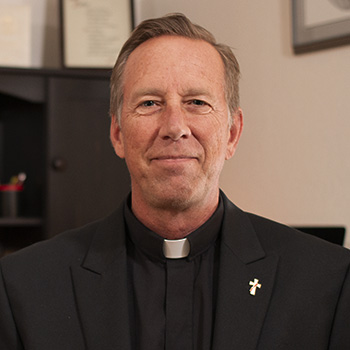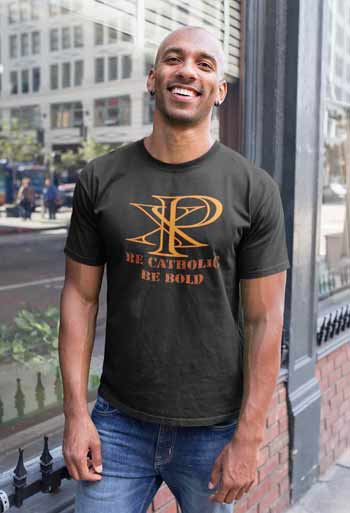
In today’s gospel, the evangelist Mark is making a statement about how the disciples failed to see clearly who Jesus is. He is not suggesting that Jesus’ power to physically heal the blind man was inadequate or limited in some way.
By Deacon Frederick Bartels
20 February 2019
In today’s gospel, we hear about this mysterious event in which Jesus heals a blind man in stages:
They came to Bethsaida. Some people brought a blind man to him and begged him to touch him. He took the blind man by the hand and led him out of the village; and when he had put saliva on his eyes and laid his hands on him, he asked him, “Can you see anything?” And the man looked up and said, “I can see people, but they look like trees, walking.” Then Jesus laid his hands on his eyes again; and he looked intently and his sight was restored, and he saw everything clearly. Then he sent him away to his home, saying, “Do not even go into the village. (Mk 8:22-26)
Is it the case that Jesus’ first attempt at healing the blind man was unintentionally unsuccessful and thus he had to give it a second go-around? To look at the passage in that way would be incorrect. Why? It’s theologically problematic to suggest that Jesus lacks the power to sufficiently physically heal whoever he wills to heal. After all, he’s God in the flesh. God’s power isn’t inadequate or limited. It can’t be or he couldn’t be God. In other words, Jesus is not merely a man who shares in God’s power, or a man who God assists. Jesus is perfectly God and perfectly man as the Council of Nicea formally confirmed in A.D. 325.
So what’s going on here?
This passage is best understood as pedagogical in nature. Mark is giving us instruction about the spiritual and intellectual state of the disciples and their difficult journey into greater understanding of who Jesus really is.
If we back up a few verses, we find that the disciples failed to understand what Jesus was telling them about the yeast of the Pharisees. Their spiritual and intellectual vision was obscured, “fuzzy,” and in need of healing. And then if we skip forward, we find that Jesus clarifies the disciples’ vision and understanding through a process of questioning them about who he is; that is, he is actively guiding them into a deeper understanding regarding his divinity and saving mission. Peter, as the leader of the apostles, finally gives the correct answer when he states that Jesus is the Messiah and thus helps to lead his brethren into theological clarity.
The mysterious passage in our gospel today is sandwiched between those two passages. It shows how the disciples spiritual and intellectual knowledge of Jesus needed to be healed. Their vision was “fuzzy.” But by spending time with Jesus and listening to him, they begin to see clearly. Peter makes a statement of clarity of vision by noting that Jesus is the Messiah, the Anointed one of God sent to rescue the people Israel from the dangers of sin and the devil.
The point is, the evangelist Mark is making a statement about how the disciples failed to see clearly who Jesus is. He is not suggesting that Jesus’ power to physically heal the blind man was inadequate or limited in some way.
What about your spiritual vision and clarity? Is it obscured in some way—by the world, by cultural ills, by the dictatorship of relativism or by closed-mindedness? How much time do you spend with Jesus in prayer and in the gospels? If you want to be healed, if you want to have your sight restored or clarified, you need to go to Jesus. You need to spend time with him and get to know who he really is as the Savior of the world.
Photo Credit: By Gino Santa Maria. shutterstock.

Deacon Frederick Bartels is a member of the Catholic clergy who serves the Church in the diocese of Pueblo. He holds an MA in Theology and Educational Ministry, and is a Catholic educator, public speaker, and evangelist who strives to infuse culture with the saving principles of the gospel. For more, visit YouTube, iTunes and Twitter.




Deacon, Jesus did not do any of his signs and wonders out of his Divibe nature (Phil 2:6). He was the Perfect Man, perfectly surrendered to the Holy Spirit. Because of his giving us the gift of his Spirit we can continue his proclamation and demonstration of the Kingdom. If he healed by his Divine nature then we could not do what he did, yet we are called to so “even greater things.” Jn 14:12-14.
In Philippians 2:6, Paul teaches us about Jesus’ kenosis, his self-emptying activity. However, this passage does not indicate that Jesus did not cease to be fully and perfectly divine when he assumed a human nature and became man. Jesus is thus human and divine, his humanity united to his Divine Person “without confusion or change, separation or division,” as the Council of Chalcedon formally decreed in 451. Here’s a more comprehensive quote from Chalcedon:
“Following the holy Fathers, we unanimously teach and confess one and the same Son, our Lord Jesus Christ: the same perfect in divinity and perfect in humanity, the same truly God and truly man, composed of rational soul and body; consubstantial with the Father as to his divinity and consubstantial with us as to his humanity; “like us in all things but sin”. He was begotten from the Father before all ages as to his divinity and in these last days, for us and for our salvation, was born as to his humanity of the virgin Mary, the Mother of God. (Council of Chalcedon (451): DS 301; cf. Heb 4:15)
“We confess that one and the same Christ, Lord, and only-begotten Son, is to be acknowledged in two natures without confusion, change, division or separation. The distinction between the natures was never abolished by their union, but rather the character proper to each of the two natures was preserved as they came together in one person (prosopon) and one hypostasis.” (Council of Chalcedon: DS 302)
Jesus human nature is united to his Divine Person through the hypostatic union. Therefore the subject of his humanity is the eternal and divine Word. Whatever Jesus did through his humanity—his healing miracles and his demonstration of his power over nature, etc.—he did as the divine Son of God incarnate. As Thomas Aquinas taught, Jesus’ humanity is the instrument through which we are saved, which is made possible by the fact that his humanity is united to the divine person of the eternal Word or Logos via the incarnation.
The Catechism teaches:
The unique and altogether singular event of the Incarnation of the Son of God does not mean that Jesus Christ is part God and part man, nor does it imply that he is the result of a confused mixture of the divine and the human. He became truly man while remaining truly God. Jesus Christ is true God and true man. (464)
It would be incorrect to suggest that the miraculous healing activities of Jesus of Nazareth did not involve his divinity because he is God in the flesh. It is precisely because his humanity is subject to his Divine Person that he has the power to work miracles.